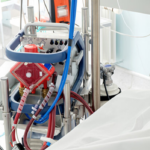
When undergoing medical or diagnostic procedures, patient comfort and safety are of utmost importance. One effective and widely used approach to minimize discomfort and anxiety is conscious sedation—a technique that allows patients to stay awake yet relaxed during procedures. Unlike general anesthesia, which induces complete unconsciousness, conscious sedation offers a safer, quicker, and less intensive alternative that is well-suited for many minimally invasive procedures.
What is Conscious Sedation?
Conscious sedation, also known as moderate sedation, is a medically supervised state in which the patient remains awake and responsive but is calm and relaxed. It’s commonly used during procedures that don’t require full anesthesia but where patient comfort is crucial.
This form of sedation reduces pain, anxiety, and discomfort while maintaining the patient’s ability to respond to verbal commands and breathe independently. It is often used in outpatient settings because of its safety and ease of recovery.
How Does Conscious Sedation Work?
Conscious sedation is typically administered through oral medications, intravenous (IV) drugs, or inhaled agents. These medications—often a combination of benzodiazepines and opioids—work together to:
- Relieve anxiety and tension
- Dull pain perception
- Induce a calm, drowsy state
- Reduce memory of the procedure (partial amnesia)
Throughout the procedure, vital signs like heart rate, oxygen levels, and blood pressure are continuously monitored to ensure the patient’s safety. The effects of sedation are usually short-lived, and recovery is often quick.
When is Conscious Sedation Used?
Conscious sedation is widely used in both diagnostic and minor surgical procedures. Common situations include:
- Endoscopic procedures (e.g., colonoscopy, gastroscopy)
- Dental surgeries (e.g., wisdom tooth extraction, implant placements)
- Minor orthopedic procedures
- Skin or soft tissue surgeries
- Cardiac catheterizations
It is particularly beneficial for patients who may feel anxious or fearful about undergoing procedures while still requiring a certain level of alertness.
Benefits of Conscious Sedation
There are many advantages to choosing conscious sedation over general anesthesia:
- Faster recovery time
- Minimal side effects, such as less nausea or grogginess
- No need for intubation or ventilator support
- Lower overall risk, especially in patients with preexisting health conditions
- Suitable for outpatient or day-care procedures
Because it is less invasive than general anesthesia, patients often feel more in control and experience fewer post-procedure complications.
Conscious Sedation vs. General Anesthesia
| Feature | Conscious Sedation | General Anesthesia |
| Awareness | Patient is awake and calm | Patient is fully unconscious |
| Breathing Support | Not required | Usually required |
| Recovery | Quick | May take longer |
| Monitoring | Continuous but less intensive | Highly intensive |
| Risk Level | Lower | Higher |
Is Conscious Sedation Safe?
Yes, conscious sedation is considered very safe when administered by trained professionals. However, patient selection is key. Before sedation, the medical team will review:
- Medical history
- Current medications
- Allergies
- Any chronic illnesses (such as heart or lung conditions)
Dr. Amit Kumar Choudhary, a specialist in Critical Care and an expert in anesthesia, ensures comprehensive pre-sedation evaluation and continuous intra-procedural monitoring for all patients at his clinic in Wakad, Pune. His expertise in handling high-risk and critically ill patients makes him a trusted choice for conscious sedation procedures.
Who Should Avoid Conscious Sedation?
Though safe, conscious sedation may not be suitable for everyone. Patients with the following conditions may require special consideration or alternative sedation methods:
- Obstructive sleep apnea
- Severe heart or lung disease
- Allergic reactions to sedatives
- History of adverse anesthesia response
In such cases, more intensive sedation or alternative forms of anesthesia may be necessary.
Summary
Conscious sedation is a safe, effective, and scientifically supported method for reducing discomfort and anxiety during medical procedures. It allows patients to stay relaxed and cooperative without the deeper risks associated with general anesthesia.
Under the expert care of Dr. Amit Kumar Choudhary, MD in Anesthesia and DrNB in Critical Care Medicine, patients in Wakad, Pune benefit from customized sedation plans that prioritize comfort and safety. With deep knowledge in Critical Care and anesthetic management, Dr. Amit ensures every procedure is handled with precision and personalized attention.
If you’re planning a procedure and are concerned about pain or anxiety, conscious sedation under expert supervision could be the ideal choice.




